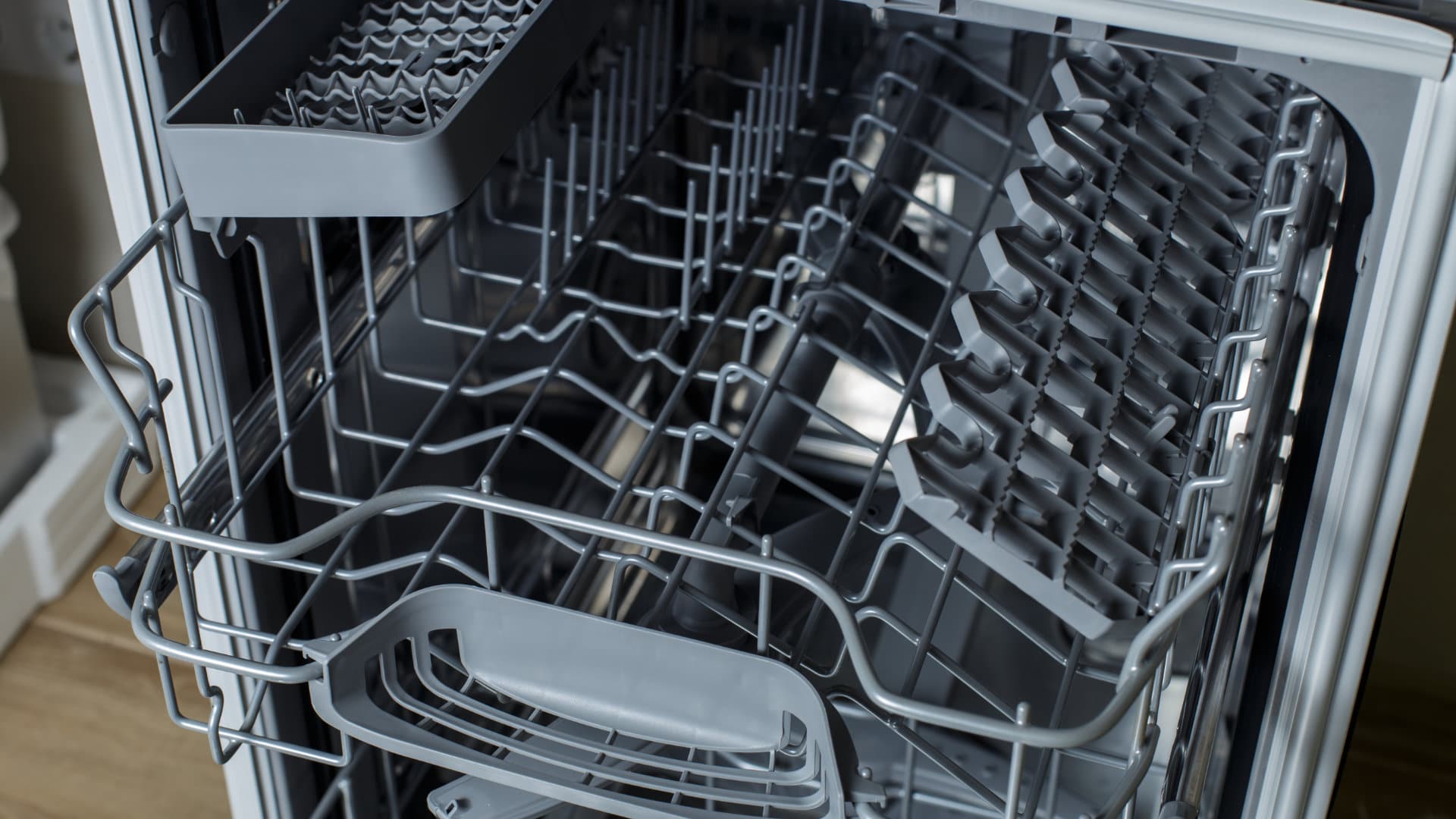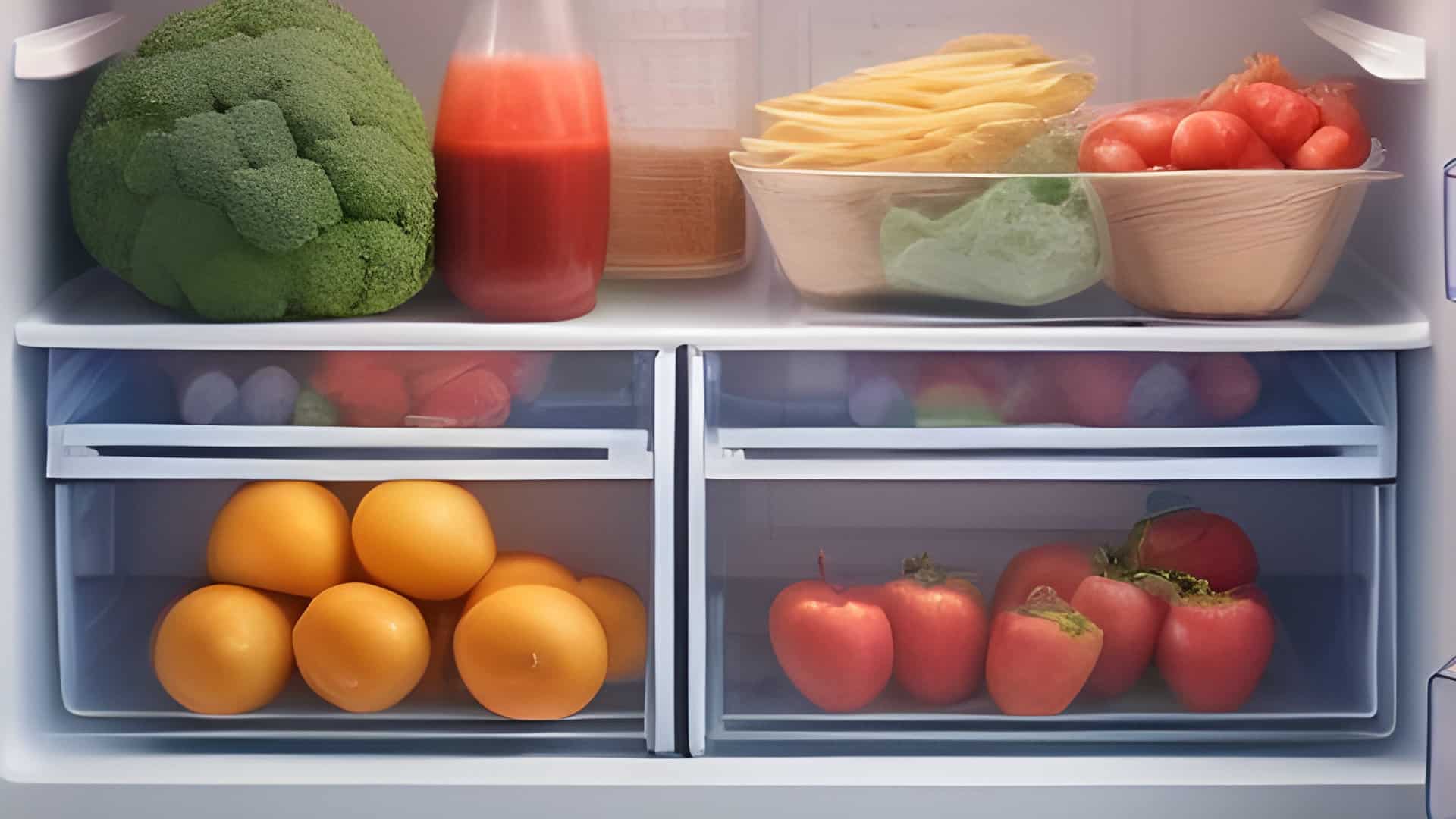
Troubleshooting your Bosch dishwasher is made easier thanks to error codes. Depending on the error code, you may be able to fix the problem yourself, or a certified Bosch technician may be required.
Your dishwasher has numerous error codes, which can vary depending on the model of the dishwasher. We outline the most common error codes below; however, your best bet is to check your dishwasher manual for what the error code means for your Bosch dishwasher model. Many Bosch dishwasher manuals can be downloaded from the Bosch website.
Error code E0
What it means: The dishwasher has entered diagnostic test mode.
Solution: This code doesn’t indicate an actual problem with the dishwasher. The “0” in the code means that no issues or error codes are present to investigate.
The method of exiting diagnostic test mode varies between models, but turning the power off and on should exit the mode.
Control board issues
If your Bosch dishwasher has a control board issue, Bosch recommends having a certified Bosch technician fix the issue. Replacing the control board is an option, but it can be expensive.
Control boards can be checked for damage, but testing them generally requires specialist knowledge. Therefore, you might want to have a technician make sure that the control board is causing the issue before replacing it.
Error code E01
What it means: A pump control circuit failure on the main control board has been identified, or a temperature sensor or thermistor issue is present.
Solution: In most cases, an E01 error code requires a Bosch technician to check the control board for faults.
If you notice that the dishwasher isn’t heating, testing the resistance of the thermistor with a multimeter can tell you if it needs to be replaced. When set to the ohms setting, if the multimeter reads “OL,” the thermistor needs to be replaced.
Further testing requires that the dishwasher’s tech sheet be used to find the specific resistance for your model’s thermistor at room temperature and when the temperature changes.
Error code E02
What it means: The heater relay on the control board has a fault or an issue exists with the temperature sensor or thermistor.
Solution: Follow the advice for error code E01 above.
Error code E03
What it means: An auxiliary heater relay is faulty on the main control board or the dishwasher isn’t filling with water.
Solution: If the dishwasher isn’t filling with water, replacing the water inlet valve should fix the issue and resolve the error code. However, if it’s a control board issue, a Bosch technician should be contacted to diagnose and fix the issue.
Error code E04
What it means: A heating system or water level sensor issue is present.
Solution: If the dishwasher has a water level sensor issue, tipping the dishwasher slightly to move the water in the dishwasher’s drain pan can resolve the error code. If the error code remains, the issue is more likely to be a heating system error code that requires a Bosch technician to diagnose and fix the issue.
Error code E05
What it means: A water switch Triac fault or a float issue exists.
Solution: A control board issue likely has occurred that requires a Bosch technician. However, locating and checking the float and float switch for damage, or testing the float switch with a multimeter for continuity, may reveal that the component needs to be replaced.
Error code E06
What it means: This usually indicates a door mechanism failure. But with some models, it can mean the turbidity sensor has failed.
Solution: This is one of the worst error codes to get as the dishwasher most likely needs to be disassembled. Therefore, a technician should be called to diagnose and fix the issue.
Error code E07
What it means: A drying issue exists.
Solution: First, check the drying fan for damage and continuity with a multimeter. If the drying fan is OK, check the wiring from the control board to the drying fan for damage to resolve the error code.
Error code E08
What it means: The control board has detected a sudden loss of water during the cycle.
Solution: Pause the cycle and check for overturned dishes that may have collected water during the cycle. If overturned dishes have not caused the error code, the tub and heat exchanger should be checked for leaks. A kinked inlet hose or a failed water inlet valve could also be causing the issue.
Error code E09
What it means: The heater or the heating relay on the control board is defective.
Solution: Check the heater’s resistance with a multimeter. The dishwasher’s tech sheet should tell you what the heater’s resistance should be. The control board should also be checked by a Bosch technician.
Error code E15
What it means: The control board has detected that the dishwasher is leaking.
Solution: Check the dishwasher for leaks. If you can’t find a leak, the flood sensor underneath the tub is likely defective or the drain pan is too full. Water may need to be removed from the drain pan or the sensor may need to be replaced.
Error code E22
What it means: Too much residual water is in the sump, which has caused a filter blockage.
Solution: Drain the water, then remove and clean out the dishwasher filter. If the issue remains, the control board or drainage system (pump, drain hose, etc) needs to be checked for issues.
Error codes E23, E24, and E25
What it means: The dishwasher has a drainage issue, usually caused by a defective drain pump or a clogged drain hose.
Solution: Check that the drain hose and pump aren’t clogged or damaged. If the pump impeller is broken, it needs to be replaced. If the pump fails a multimeter continuity test, it needs to be replaced.
Other less common error codes
Error code E10 or E12: Slow heating error. Run a deep cleaning dishwasher cycle with a dishwasher cleaning and descaling product. If the issue remains, the heater most likely needs to be replaced.
Error code E11: A thermistor or NTC (temperature sensor) error has been detected. The resistance of the thermistor or the NTC (temperature sensor) needs to be checked to diagnose the issue.
Error code E13: The dishwasher water is too hot. Make sure the dishwasher is getting cold water and that the temperature sensor isn’t faulty.
Error code E14: The dishwasher’s flow sensor or read switch doesn’t detect water entering the dishwasher. Either the flow sensor is defective or a water supply problem has occurred.
Error code E16: The dishwasher is filling with water when it shouldn’t be. Replacing the water inlet valve should fix the issue.
Error code E17 or E18: The dishwasher isn’t filling with water. Check that the dishwasher is receiving water and potentially replace the water inlet valve.
Error code E19, E20, E21: A heating issue has been identified. The heat pump or heat exchanger needs to be checked for faults.
Error code E26: An issue with the diverter motor is present. Check the motor for faults.
Error codes E27, E29, E30: A power voltage issue has arisen. Unplugging the dishwasher for five minutes may resolve the issue. Otherwise, you’ll need to contact a technician.
Error code E28: A fault has occurred with the Aqua sensor. See error code E06 above.

How to Fix the nF Error Code on a Samsung Washer

Kenmore Elite Dryer Issues: How To Troubleshoot

Microwave vs. Oven: Pros and Cons and How They Differ

Self-Cleaning Oven Smell: Causes & Odor Reduction Tips

Frigidaire Ice Maker Not Working? 7 Ways to Fix It

Why Is Your LG Refrigerator Not Cooling? (9 Common Reasons)

GE Oven F2 Error: Causes & Solutions

How to Reset the Water Filter Light on a Samsung Refrigerator

Maytag Washer Showing F5 Error Code? Here’s What To Do






